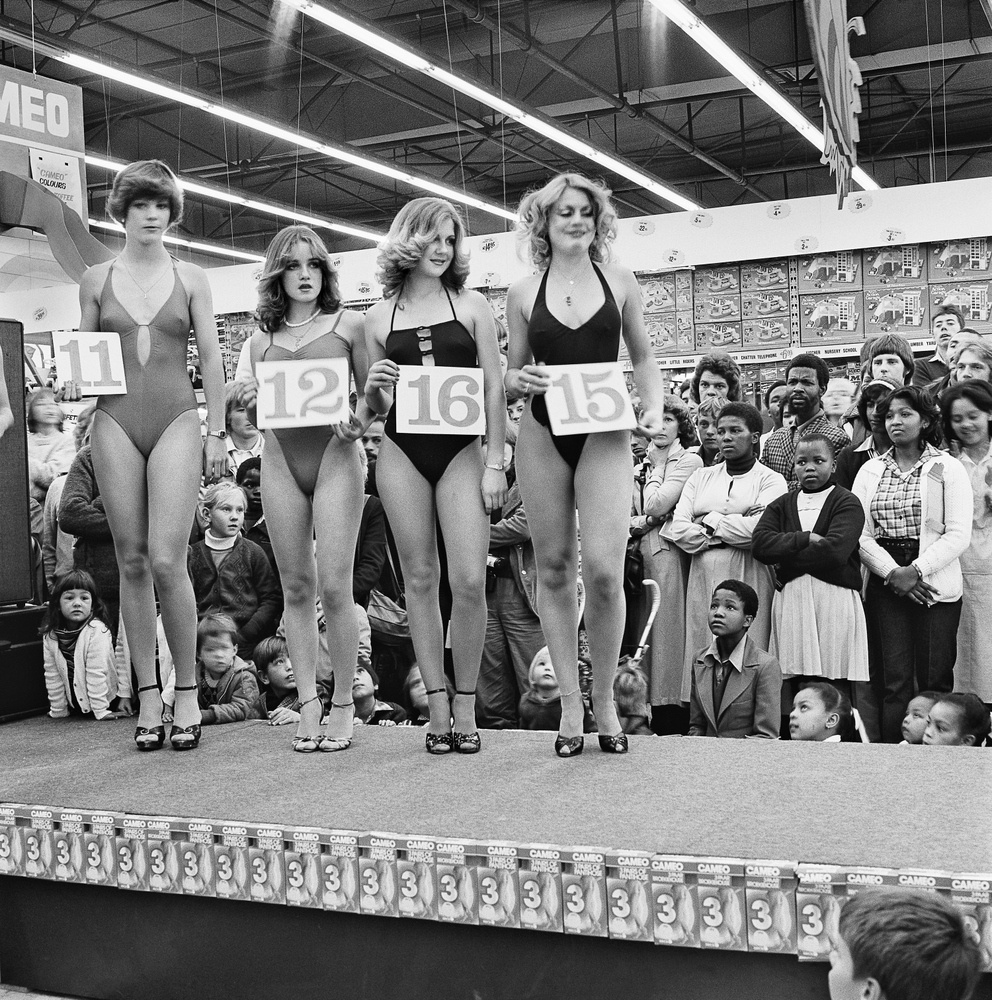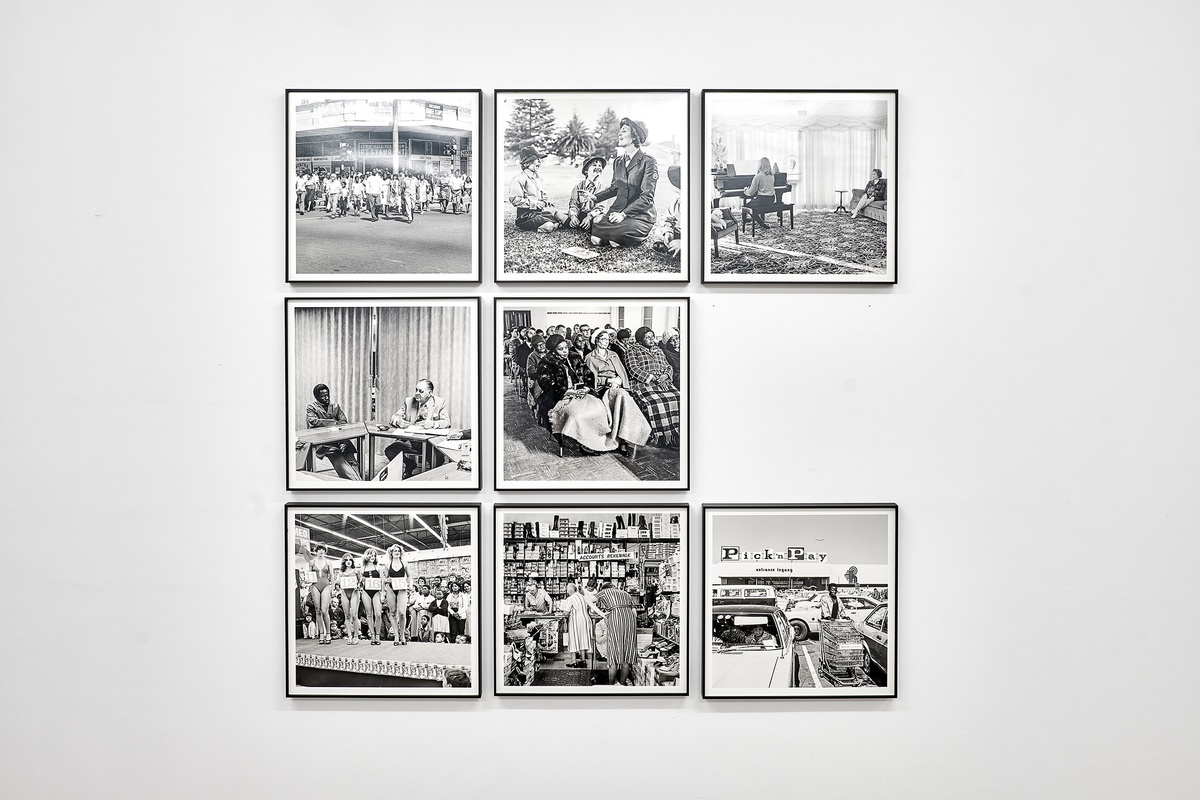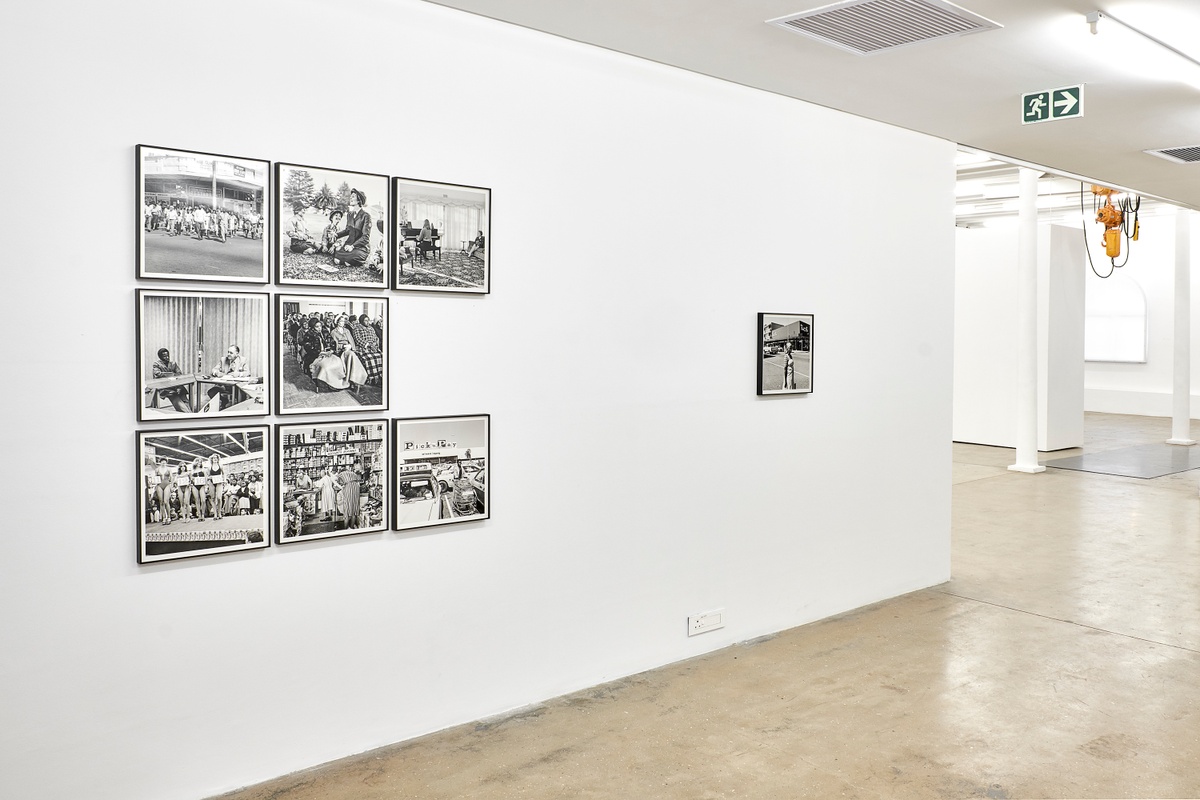David Goldblatt

The photograph is one of social dissonance, a symptom particular to South African life under apartheid. A row of four young women in swimming costumes and high heels pose on a raised walkway under hypermarket strip lighting. It is the semi-finals of Miss Lovely Legs (that is, Miss Lovely White Legs), a competition of little significance beyond the store’s turnstiles. That the contestants are likely deeply conservative – at a time when the word liberal was tantamount to slur – and in a state of undress in front of a crowd is the first sign of dissonance. That the crowd is mixed (hypermarkets being one of the few unsegregated amenities) is the second. Of the black men and women in the audience, most regard the scene, those lovely legs, with something like puzzled condescension. Nowhere else would they be allowed – no, invited – to look so openly at the bodies of young white women. There is, too, a third point of dissonance, less pressing but apparent: it is mid-winter and too cold to be dressed in only a swimsuit.
This photograph appears in In Boksburg (first edition), 1982; Lifetimes Under Apartheid, 1986; Fifty-one Years, 2001; In Boksburg (second edition), 2015; On Common Ground, 2018; and Structures of Dominion and Democracy, 2018.
b.1930, Randfontein; d.2018, Johannesburg
“I was drawn,” the late photographer David Goldblatt wrote, “not to the events of the time but to the quiet and commonplace where nothing ‘happened’ and yet all was contained and immanent.” A preeminent chronicler of South African life under apartheid and after, Goldblatt bore witness to how this life is written on the land, in its structures or their absence. Unconcerned with documenting significant historic moments, his photographs stand outside the events of the time and yet are eloquent of them. Through Goldblatt’s lens, the prosaic reveals a telling poignancy. Even in those images that appear benign, much is latent in them – histories and politics, desires and dread. His photographs are quietly critical reflections on the values and conditions that have shaped the country; those structures both ideological and tangible. Among his most notable photobooks are On the Mines (1973), Some Afrikaners Photographed (1975), In Boksburg (1982), The Structure of Things Then (1998), and Particulars (2003).

